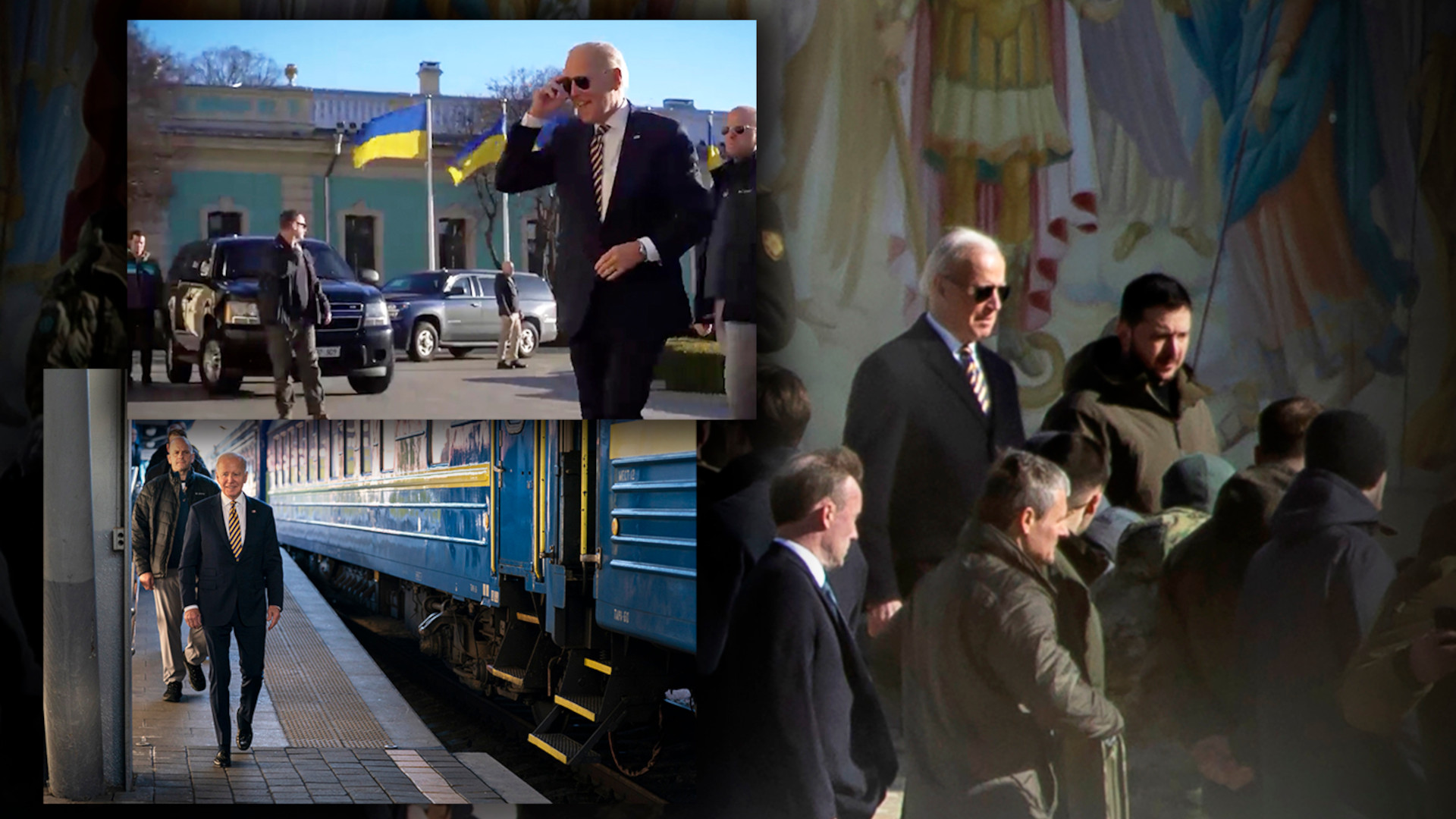With the first anniversary of Russia’s full-scale invasion of Ukraine just days away, U.S. President Joe Biden today made an unannounced visit to Kyiv. The trip, the president’s first since Russian troops flooded into Ukraine last year and during which he announced a new military aid package, has been in the works for months due to security concerns. Air raid sirens sounded as Biden and his Ukrainian counterpart, Volodymyr Zelensky, walked outside in the capital Kyiv, underscoring the very real continuing threat the city faces from Russian strikes.
“One year ago, the world was literally at the time bracing for the fall of Kyiv… Perhaps even the end of Ukraine,” Biden said during a speech from the Ukrainian capital. “One year later, Kyiv stands. And Ukraine stands. Democracy stands. The Americans stand with you, and the world stands with you.”
“It’s worth fighting for, for as long as it takes,” Biden continued. “And that’s how long we’re going to be with you, Mr. President. For as long as it takes.”
“We’ll do it,” Zelensky said shaking Biden’s hand after those last remarks.
“When Putin launched his invasion nearly one year ago, he thought Ukraine was weak and the west was divided,” Biden had said in an earlier White House-issued statement. “He thought he could outlast us. But he was dead wrong.”
Biden’s visit to Kyiv, the statement continued, will serve to reaffirm America’s “unwavering and unflagging commitment to Ukraine’s democracy, sovereignty, and territorial integrity.”
Zelensky told Biden his visit was “an extremely important sign of support for all Ukrainians.”
As already noted, Biden has not visited Ukraine since Russia launched its all-out invasion in February 2022. Other Western leaders, including British Prime Ministers Boris Johnson and Rishi Sunak, French President Emmanuel Macron, and German Chancellor Olaf Scholz, have traveled to the Ukrainian capital since then, as have other senior U.S. officials.
“The president was fully briefed on each stage of the plan and any potential contingencies, and then made the final ‘go’ or ‘no go’ decision after a huddle in the Oval Office and by phone with some key members of his national security cabinet on Friday,” Principal Deputy National Security Advisor Jon Finer said at a press briefing earlier today. “This visit was meticulously planned over a period of months, involving several offices in the White House — of course, the Chief of Staff’s office, the NSC, and White House Military Office — as well as a small number of colleagues from the Pentagon, the Secret Service, and of course, the intelligence community, which offered threat assessments on the visit.”
Only a relatively small entourage accompanied Biden to Kyiv. The traveling party consisted “basically of a handful of his closest aides, [a] small medical team, [a] photographer, and the security package,” according to Finer.
The exact composition of the U.S. security team that accompanied Biden to Kyiv is unclear. Pictures and videos of the two presidents walking in the Ukrainian capital show plainclothes Secret Service agents, as well as uniformed troops in full combat kit, including helmets and body armor. The latter personnel, who are armed with various AR-15/M16-type rifles, or derivatives thereof, appear likely to be Ukrainians based on what has been seen during past visits by Western leaders. Regardless, it is certain that a U.S. Secret Service Counter Assault Team was somewhere nearby waiting to spring into action.
CNN has reported that Biden was presented with options for making a visit to Ukraine that would not have involved having to travel to Kyiv. This could’ve included meeting with Zelensky in the western Ukrainian city of Lviv, which is very close to the Polish border and has been viewed as a less risky destination for foreign officials since the all-out war in the country erupted last year.
Interestingly, speaking alongside Principal Deputy National Security Advisor Finer at the press briefing today, National Security Advisor Jake Sullivan also disclosed that the U.S. government had alerted its Russian counterparts a few hours ahead of Biden’s impending visit.
This was for “de-confliction purposes,” according to Sullivan. “Because of the sensitive nature of those communications, I won’t get into how they responded or what the precise nature of our message was, but I can confirm that we provided that notification.”
Sullivan further declined to confirm Biden’s exact means of traveling to Kyiv, though his final leg reportedly involved a train ride from Poland, according to the New York Times. The White House Press Pool later confirmed this had been the case and that Biden had traveled by convoy on the ground inside Poland from Rzeszów to a near-empty Przemyśl Główny train station.
Biden was dropped off almost right at the specific train car that he would be riding in. The train, unsurprisingly, had a significant security presence onboard, a report from Fox News explained. The train arrived in Kyiv some 10 hours later after “stopping a handful of times for unclear reasons except to pick up additional security on at least one occasion,” according to that story.
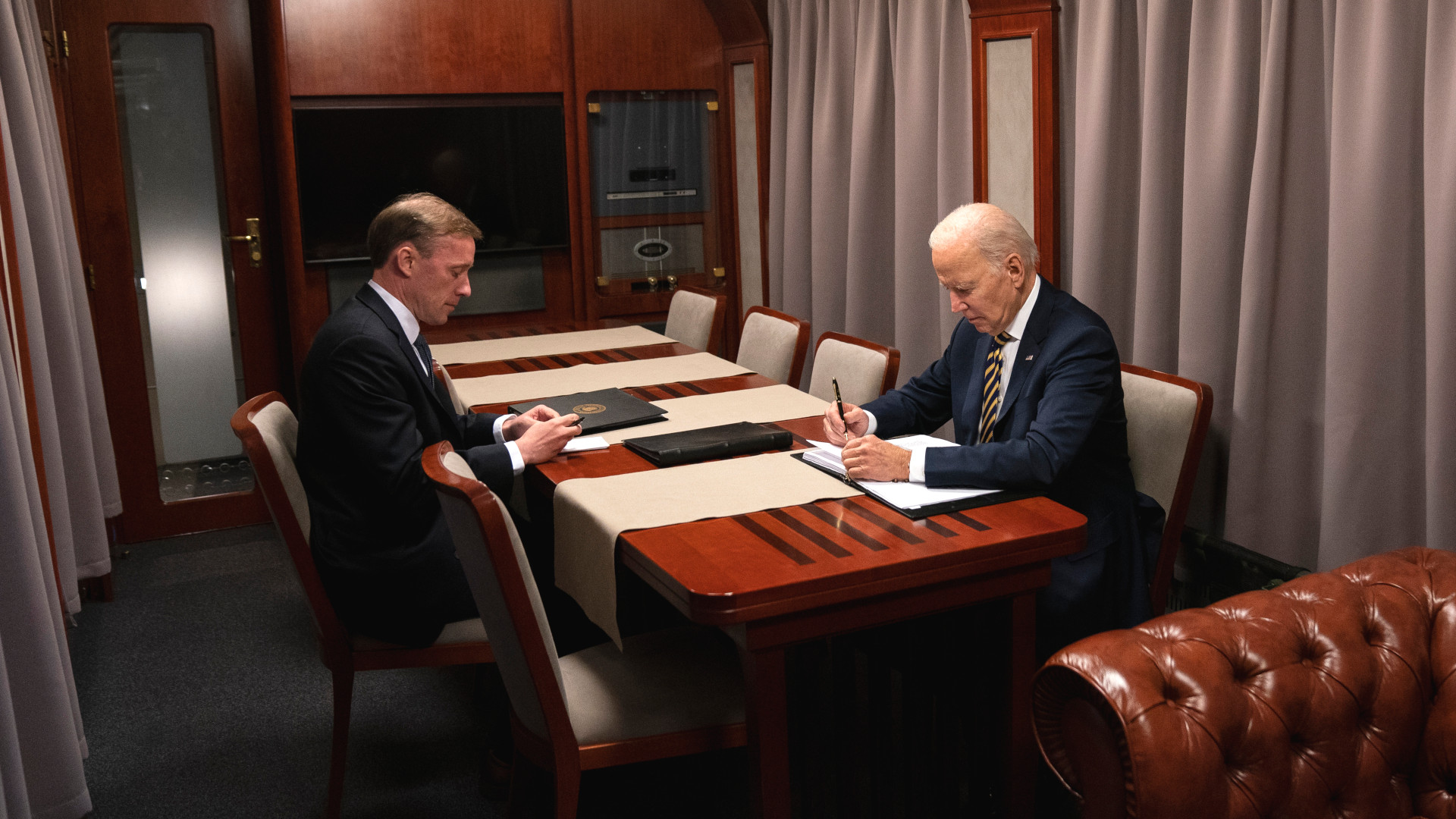
Trains have been the usual method by which Western officials have visited the Ukrainian capital since the country became engulfed in conflict. Biden is well known for his fondness of trains and for how they have played a part in his political career, something not unheard of for past presidents either. So the mode of transportation was uniquely fitting for the historic visit. You can read all about past presidents’ use of trains in this past War Zone feature.
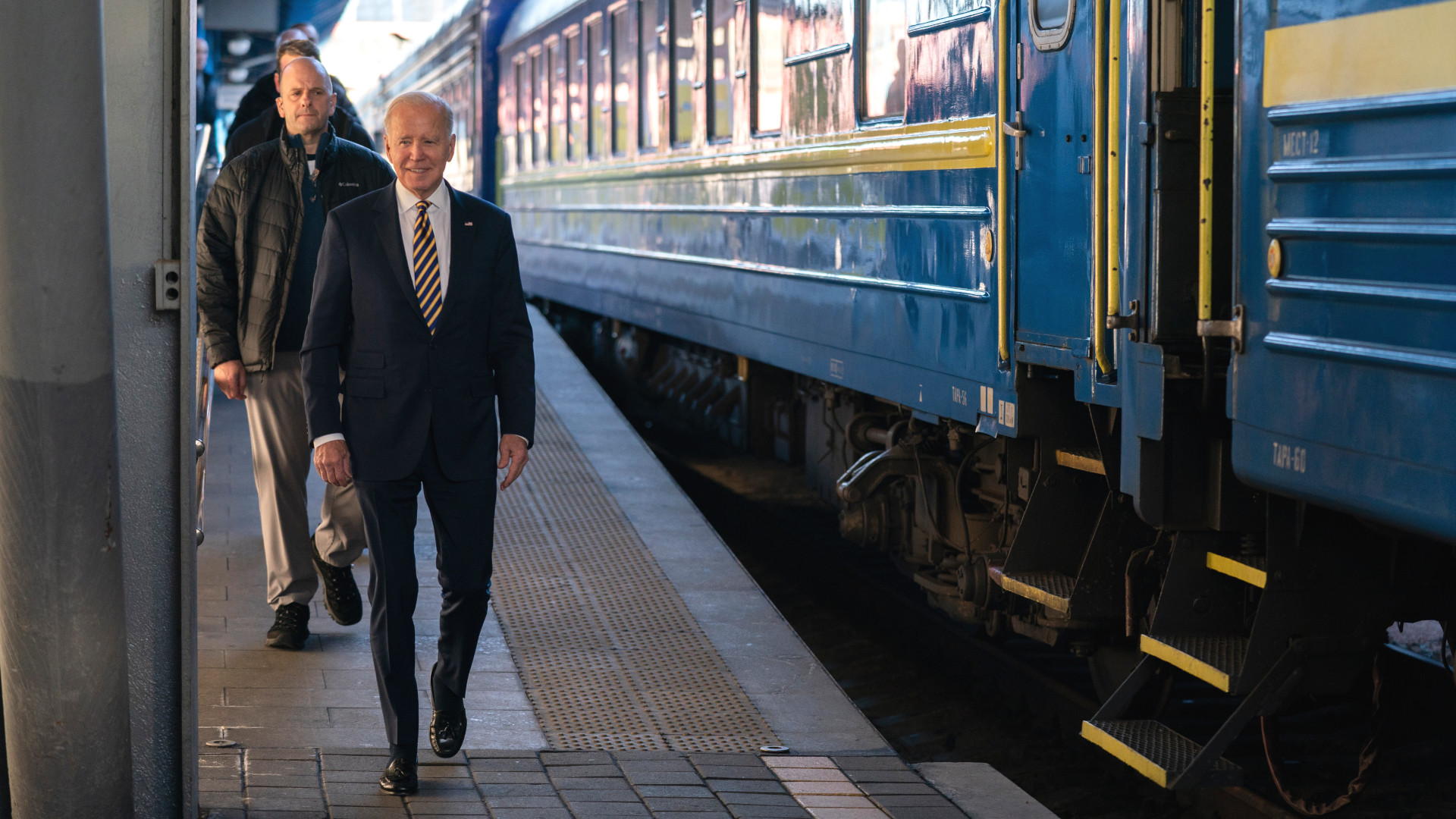
Despite the understandable secrecy surrounding Biden’s visit, there had been numerous indications that a visit by him or Vice President Harris was imminent in the past 24 hours. Harris had already arrived in Germany for the Munich Security Conference, which wrapped up yesterday. In some ways, her presence there offered cover for Biden’s visit given that she had traveled to Germany on a C-32A. It is not unheard of for additional C-32As to support major trips like that, acting as spares in the event that a jet breaks down or helping to bring in additional officials or other individuals.
A C-32A special air mission (SAM) transport aircraft first carried Biden to Poland. Open-source flight tracking data had caught this plane using the callsign SAM060 departing Joint Base Andrews just outside of Washington, D.C., early yesterday morning and heading toward Europe. At Andrews, “the plane was parked in the dark next to a hangar away from the tarmac with the shades drawn, waiting for Biden’s arrival,” according to Fox News.
After a refueling stop in Germany, its crew turned off the transponder for the short trip to Rzeszów Airport near the Polish-Ukrainian border, according to AP. Among other things, Rzeszów is a major transit hub for U.S. and other foreign military aid heading into Ukraine.
Though more typically associated with the movements of the vice president and other senior U.S. officials, these jets are often employed in the Air Force One role for various reasons, as you can read more about here.

Online fight trackers had also picked up an unusual flurry of other aerial activity near Poland’s eastern border with Ukraine in the hours leading up to the visit. This has included a pair of E-3 Sentry airborne warning and control system, or AWACS, radar planes — with the callsigns NOVA01 and 02 — on station in Polish airspace in areas where they can monitor activity on the Ukrainian side of the border. Various intelligence-gathering aircraft have also been active in recent hours close to Ukraine’s borders, including a U.S. Air Force RC-135W Rivet Joint, a U.S. Navy EP-3E Aries II, a U.S. Army ARTEMIS jet, and a Swedish S 102B Korpen.
Most of these operate regularly in the region, although not often in such numbers simultaneously, with the two E-3s being especially noteworthy. Other U.S. military aircraft, including C-17s and KC-135 aerial refueling tankers, were tracked flying in the area. These would just be the aircraft that were traceable, with many more that were not, including U.S. tactical aircraft such as fighters and some helicopters.
More immediate rumors about a potential U.S. presidential visit to Ukraine began to circulate early this morning when videos posted to social media showed the unusual closure of several major roads in Kyiv before a large procession of vehicles appeared. The caravan itself had many of the tell-tale signs of a U.S. presidential motorcade, although some staple support elements were absent. This may have imparted some extra risk into such an operation, but including them would likely give away the nature of the convoy without question.
At least one vehicle Biden used while in Kyiv was a nondescript white Toyota armored SUV. He arrived at the Mariinsky Palace, the official residence of the Ukrainian president, in this vehicle. The vehicle’s Ukrainian license plate suggests that it may well have belonged to the country’s government.
Principal Deputy National Security Advisor Finer noted at the press briefing today that the logistics of the trip were determined to a large degree by the “lack of military footprint in Ukraine, [where] the United States also has a very light embassy footprint compared to the massive operations in Afghanistan and Iraq during wartime visits by presidents to those places.”
The White House further described the process of ensuring that the U.S. president could safely visit Kyiv as being “logistically complicated and difficult.” According to White House Communications Director Kate Bedingfield, “a visit from a U.S. president to an active war zone like this is historic and unprecedented [and] required a great deal of careful planning.”
While U.S. presidents have made previous visits to war zones, including Iraq and Afghanistan, these have at least had the benefit of a robust U.S. military presence on the ground, as well as control of the critical infrastructure. Maybe above all else, in those places, the skies were not contested and the U.S. had total dominance over them. This is anything but the case in Ukraine with myriad threats abound.
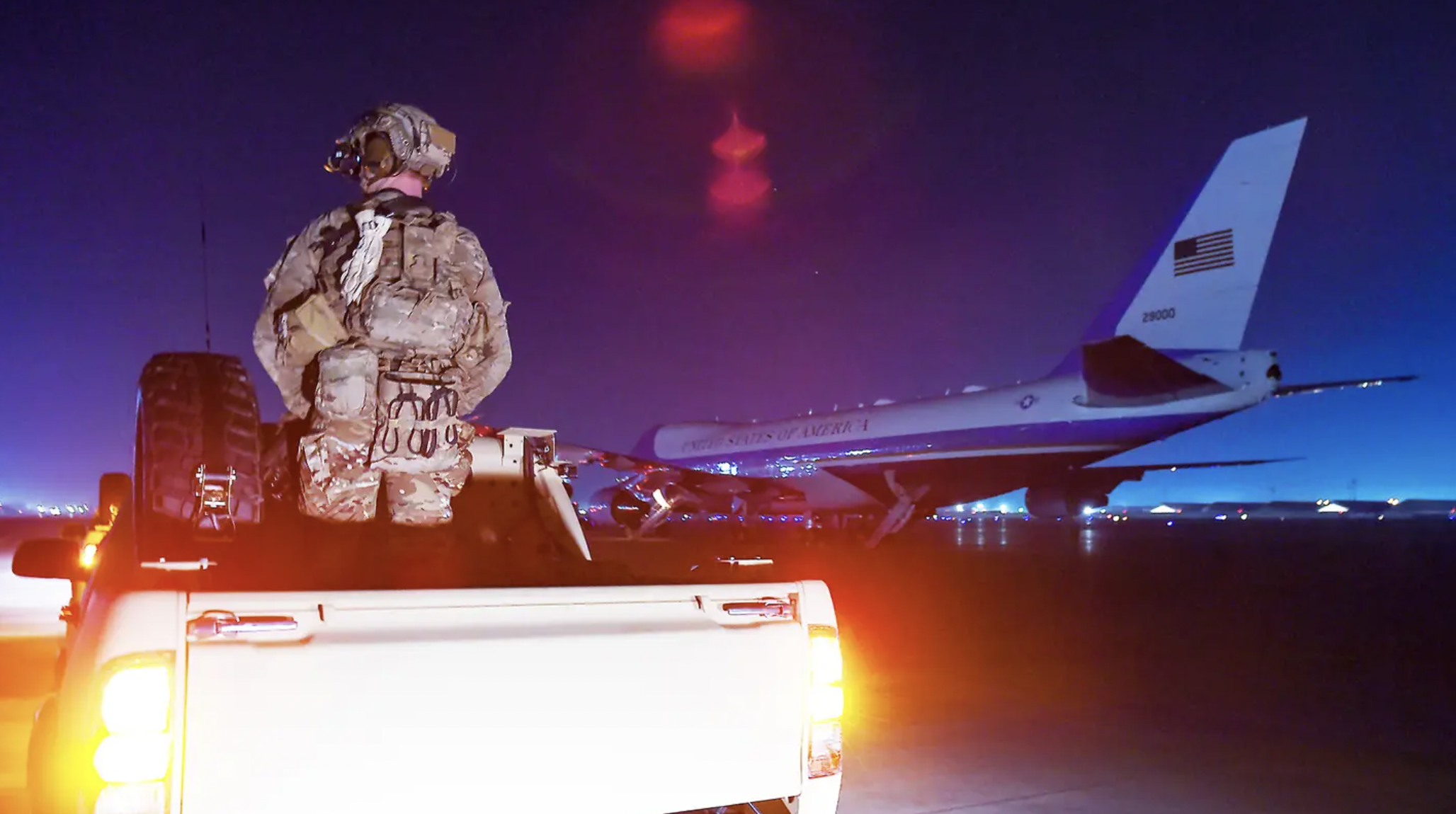
The fact that it is too risky for Western officials to fly into Ukraine would’ve presented additional hurdles for those planning Biden’s visit. Ahead of more typical presidential trips abroad, as well as visits by the vice president and other top U.S. officials, elements of the motorcade and other force protection assets, among other things, are brought in by military cargo aircraft. Even Marine One helicopters are always present even if the motorcade is used. They sit alert waiting to whisk the president away to a remote site far from the epicenter of whatever event triggered their evacuation. This happens at pretty much every stop domestically and especially internationally.
The videos below, showing advance teams arriving ahead of Biden’s attendance at Queen Elizabeth II’s funeral in the United Kingdom in September 2022 and Vice President Kamala Harris’ recent visit to Germany, give a sense of the typical scope and scale of these operations.


Even with months of planning, Biden’s trip to Kyiv presented obvious risks. The fact that air raid sirens went off while he was there highlighted that the Ukrainian capital very much remains under threat from Russian air and missile strikes.
What exactly triggered the sirens is not immediately clear. There have been suggestions that Russia may have launched a MiG-31K Foxhound combat jet, the variant of that aircraft capable of carrying the Kinzhal aeroballistic missile, from an airbase in neighboring Belarus. Unconfirmed reports say the jet took off at around 11:30 A.M. local time before landing roughly two hours later. There is no indication that any Russian munitions have been aimed at Kyiv during Biden’s visit.
What we don’t see is the massive amount of unique contingency planning that had to go into this operation, some of which was likely unprecedented. One could rightfully assume major packages of tactical airpower were present along the border, ready to move into Ukraine should a major threat emerge. This would include advanced counter-air and air-to-ground capabilities.
Then there is the biggest hurdle—extracting the president should something terrible occur. Kyiv is hundreds of miles from NATO borders. A full package of special operations aircraft and operators would have been on standby for just such a contingency. CV-22 Ospreys would likely have been the primary platform due to their speed, range, defensive suites, communications, and payload-carrying capabilities. It’s quite possible that one day we could find out U.S. special operations forces staged temporarily inside Ukraine for just such a contingency in order to decrease reaction time, but at this point, there is no proof of that.
It’s also possible that local aircraft, such as the ex-Afghan Mi-17 Hip helicopters the U.S. gifted to Ukraine, a type that is flown by the top echelons of the U.S. special operations community and the CIA in limited numbers, could also have been put into service as contingency extraction platforms. Ukrainian officials have themselves taken advantage of other arrangements for sensitive travel in the region in the past. Any of this would include the need to respond to a crisis across the president’s entire route, including his long train ride, not just in Kyiv.
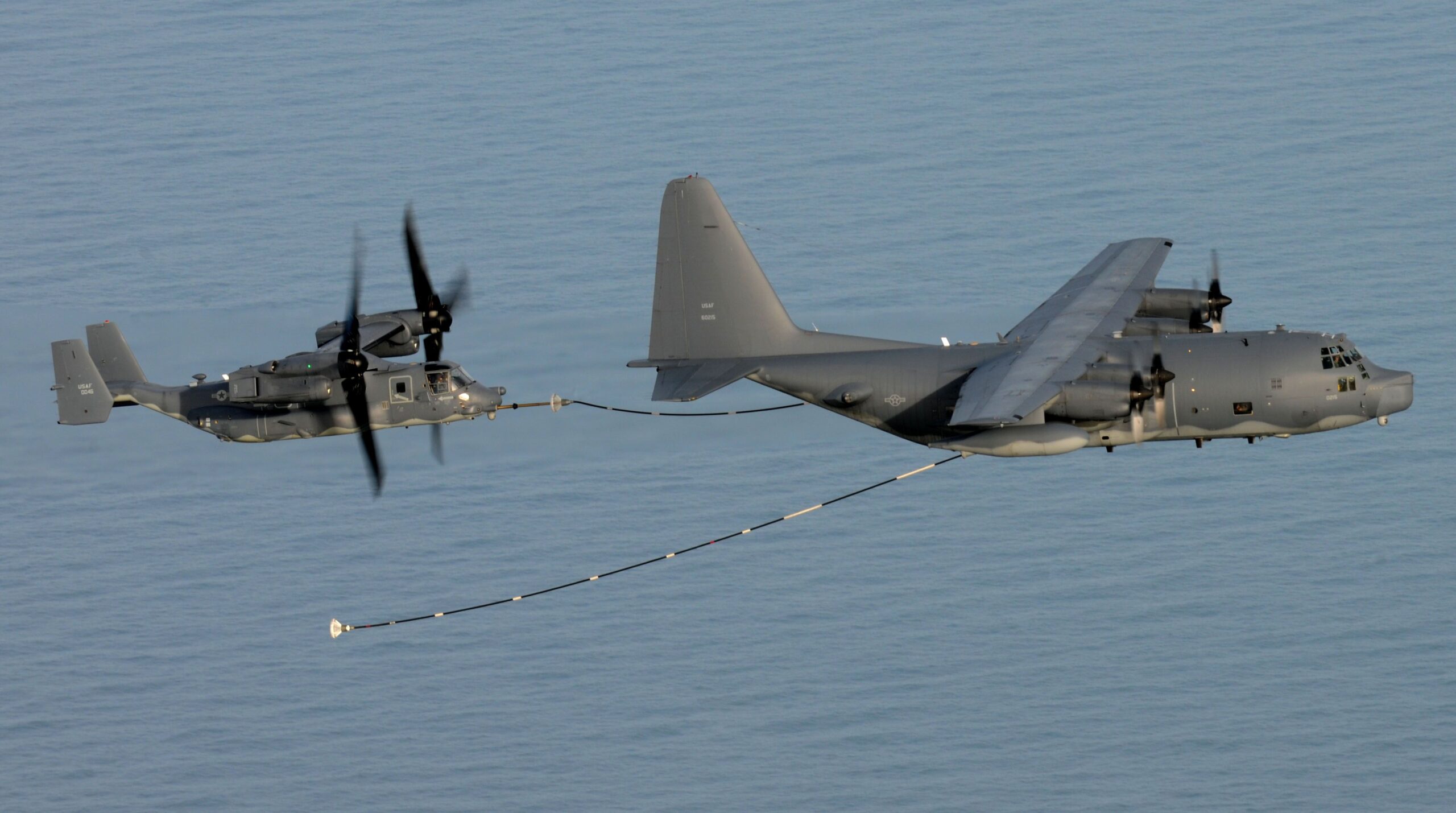
Then there would have been just the counter-unmanned aircraft system (C-UAS) package that would have been present for Biden’s open movements in the capital. The threat from small weaponized drones and loitering munitions was likely a major, if not a top, concern.
The list of people, hardware, and capabilities needed to pull this off goes on and on. While the operation’s footprint in Kyiv seemed very light, the total package supporting such a mission was anything but.
The standard presidential transport mission is often referred to as a ballet, with overseas missions being especially complex. This would have been like no other in terms of intricacy and the need for creative risk mitigation.
President Biden has since left Ukraine and subsequently traveled to Poland’s capital Warsaw.
Regardless, the symbolism of Biden very publicly meeting with Zelensky and walking the streets of Kyiv so close to the one-year anniversary of Russia launching its all-out invasion and pledging the United States’ continued support is significant. On top of that, President Biden took the opportunity to announce yet another major military aid package for Ukraine, valued at approximately $460 million.
This new tranche of aid is the first to include specialized M7 variants of the Bradley Fighting Vehicle designed to help target artillery operations. It also includes more artillery rockets and shells, Javelin anti-tank guided missiles, unspecified air defense radars, and more. The War Zone‘s readers can find more information about the M7s and the rest of this military assistance package here.
“President Biden had the opportunity … with President Zelenskyy to talk about all aspects of the ongoing war,” according to National Security Advisor Sullivan. “They spent time talking about the coming months, in terms of the battlefield, and what Ukraine will need in terms of capabilities to be able to succeed on the battlefield.”
The issue of artillery ammunition is a particularly pressing one right now amid an apparent renewed Russian offensive push in Eastern Ukraine. It is also being discussed by European foreign ministers meeting in Brussels.
“It is the most urgent issue,” said Josep Borrell, the high representative of the European Union (EU) for foreign affairs and security policy, speaking before the Brussels meeting. “If we fail on that, the result of the war is in danger,” he added.
On the agenda is a proposal from Estonian Prime Minister Kaja Kallas under which EU nations will come together to jointly provide ammunition to Ukraine.
On top of the new U.S. aid, Biden said today that he will announce additional sanctions on Russia, including more restrictions on companies considered to be assisting the Russian military, later this week.
Even more so now, eyes will be on Russia again tomorrow, with President Vladimir Putin due to make a major address, including an update on plans for the war in Ukraine. Initially presented euphemistically to the Russian public as a “special military operation,” the Kremlin is now increasingly framing the conflict as a proxy war against NATO and the Western world at large, with the United States as its figurehead.
As the U.S. government continues to sign off on arms transfers to Kyiv, it seems highly likely that Biden’s announcement today will figure in Putin’s address. Putin could also take the opportunity to directly respond to criticism that has already emerged domestically about the lack of any apparent effort to prevent President Biden from traveling to Ukraine.
At least one state-run TV network in Russia has already asserted that Putin could have put a stop to the visit had he decided not to provide a guarantee of security, if that was indeed the case at all.
Clearly, Biden’s visit to Ukraine, a long time coming and the result of very careful planning, has already resonated far beyond that country.
UPDATE: 9:30 P.M. EST:
Online flight tracking software shows that one of the U.S. Air Force’s two VC-25A Air Force One presidential aircraft, along with an E-4B Nightwatch “Doomsday Plane,” have departed from Andrews Air Force Base. The jets appear to be heading along a trans-Atlantic route and are likely bound for Poland to pick up President Biden and the rest of his entourage.
The Air Force only has four E-4Bs, which serve as highly specialized and survivable airborne command posts. They provide the president with a contingency backup airborne command post from which they can initiate a nuclear strike via a mechanism known as the National Command Authority (NCA). As such, one of the Nightwatch jets typically shadows the president when they fly abroad.
Biden was already scheduled to make a visit to Poland between February 20 and 22, where he will meet with Polish Prime Minister Mateusz Morawiecki. Possible changes to the U.S. military’s force posture in Poland, including an increased number of permanently deployed American forces, as well as other U.S.-Polish military cooperation, are expected to be on the agenda.
Contact the authors: thomas@thedrive.com, joe@thedrive.com
